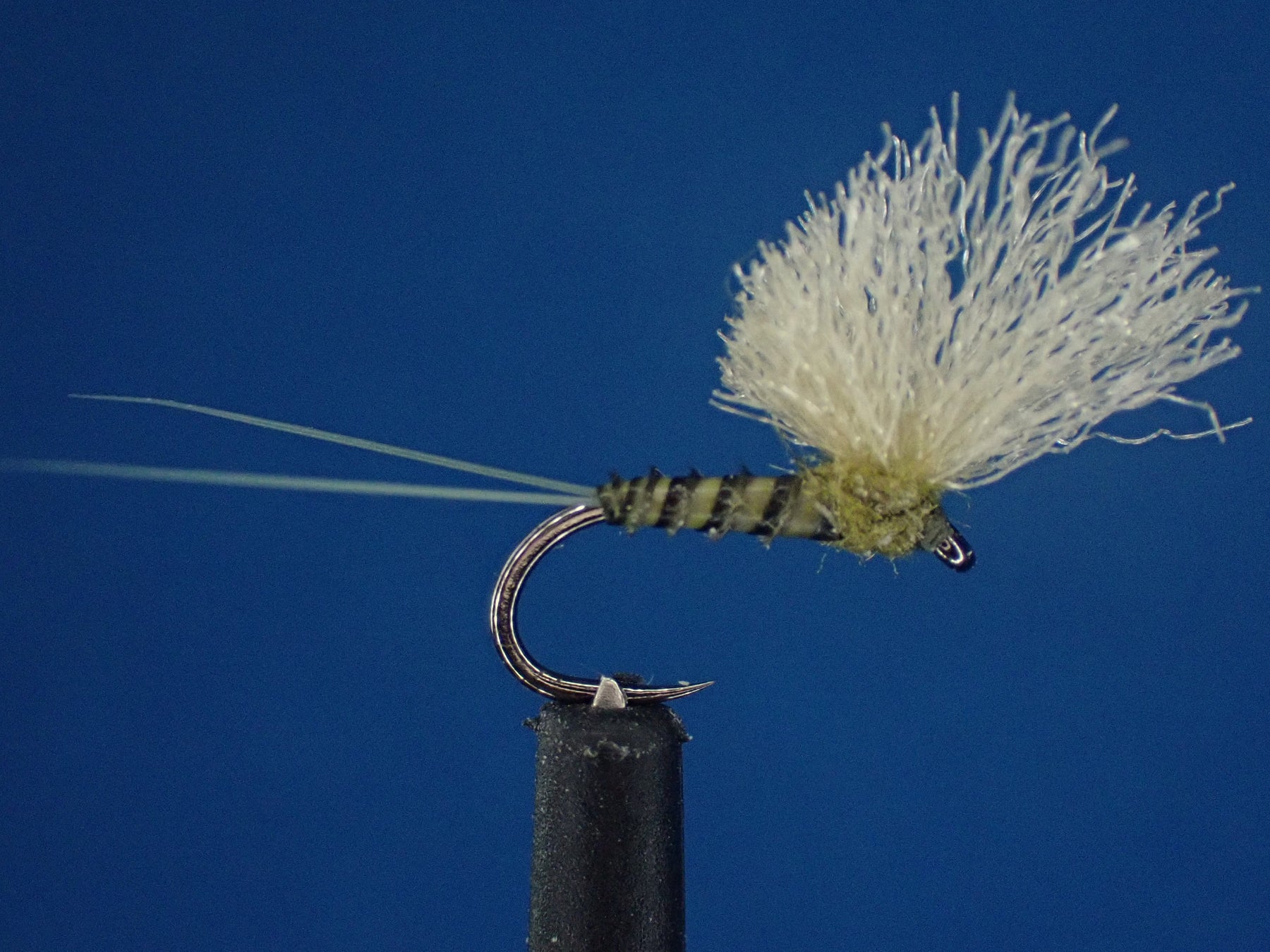Free Shipping in the USA
on orders over $100

Unveiling the Mystique of Blue Wing Olives: The BWO Guides Upright Wing Dry Fly
In the world of fly fishing, certain species of aquatic insects hold a revered status amongst anglers, and one such species is the Blue Wing Olive (BWO). BWOs play a vital role in the ecosystem and are crucial elements in the fly fisher's repertoire. Let's delve into the significance of these insects, their lifecycle, and how they impact fishing experiences across different regions.
Importance of Blue Wing Olives for Fish
Blue Wing Olives are renowned for their prolific hatches, that occur throughout the year in many regions. These insects provide a consistent and reliable food source for fish, making them an integral part of aquatic ecosystems. The hatches of BWOs attract fish to the surface, triggering feeding frenzies among trout and other species of fish
From the perspective of fish, BWOs are highly nutritious and readily available, making them a preferred choice for feeding. Trout, in particular, key in on BWOs due to their abundance and accessibility, especially during hatch seasons. Therefore, for fly anglers, understanding BWO behavior and having the right imitations in their fly box can significantly enhance their chances of success on the water.
BWO Upright Wing Dun Dry Fly Tying Tutorial:
BWO Upright Wing Dun Dry Fly Materials List:
- Hook: Moonlit Premium TOGATTA ML102 sz14-20
- Thread: Semperfli Classic Waxed 18/0 Olive Dun
- Tail: Semperfli Tailing Fibbets Silver Dun
- Body: Magpie Premium Wild Turkey Biots Olive Dun
- Thorax: Semperfli Kapok Dubbing BWO
- Wing: HAWGFISH Hawg Wing Caribou
Sizes of BWOs in their Dun (Dry Fly) Stage
During the dun stage, when BWOs emerge from the water and rest on the surface, they exhibit various sizes depending on the species and environmental factors. Typically, BWO duns range from size 14 to size 22, with smaller sizes being more prevalent. However, variations can occur based on geographic location, water temperature, and other factors.
Regional Hatch Charts and Weather Hatch Conditions
United States:
Western US (Rocky Mountains, Pacific Northwest): BWO hatches are prolific in these regions, with peak activity in spring and fall. Sizes typically range from 14 to 20.
Eastern US (Appalachians, Northeast): BWO hatches occur year-round but are more pronounced in spring and fall. Sizes range from 16 to 22.
Canada:
Western Canada (British Columbia, Alberta): BWO hatches are prevalent in rivers and streams, especially in the Rockies. Sizes range from 14 to 20, with hatches occurring predominantly in spring and fall.
Eastern Canada (Ontario, Quebec): BWO hatches are common, particularly in trout waters. Sizes range from 16 to 22, with peak activity in spring and fall.
UK:
England, Scotland, Wales: BWO hatches are widespread in rivers and stillwaters, with sizes ranging from 16 to 22. Peak hatches occur in spring and fall, although sporadic hatches can be observed year-round.
Europe:
Scandinavia: BWO hatches are significant in rivers and lakes, with sizes ranging from 16 to 22. Peak hatches occur in spring and fall, with sporadic activity throughout the year.
Central Europe: BWO hatches are prevalent in rivers and streams, with sizes ranging from 16 to 22. Peak activity occurs in spring and fall, with variations depending on local conditions.
Conclusion
In conclusion, Blue Wing Olives, particularly in their upright wing stage, are essential components of aquatic ecosystems and play a crucial role in fly fishing. Understanding their significance, lifecycle, and regional variations is key for anglers looking to capitalize on BWO hatches. By incorporating BWO imitations into their arsenal and leveraging regional hatch charts and weather conditions, fly fishers can enhance their fishing experiences and increase their chances of success on the water. So next time you head out for a day of fly fishing, make sure to have some Upright Wing Blue Wing Olive patterns in your fly box—you never know when the hatch will be on!

Leave a comment